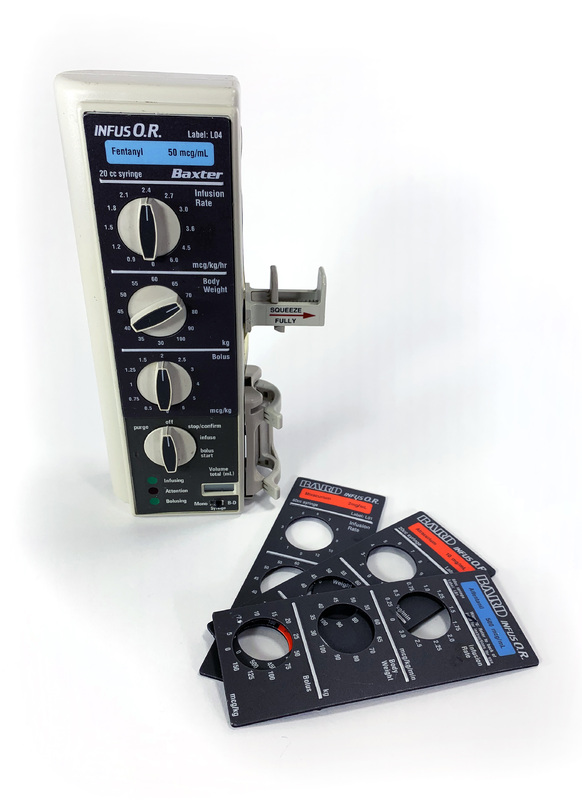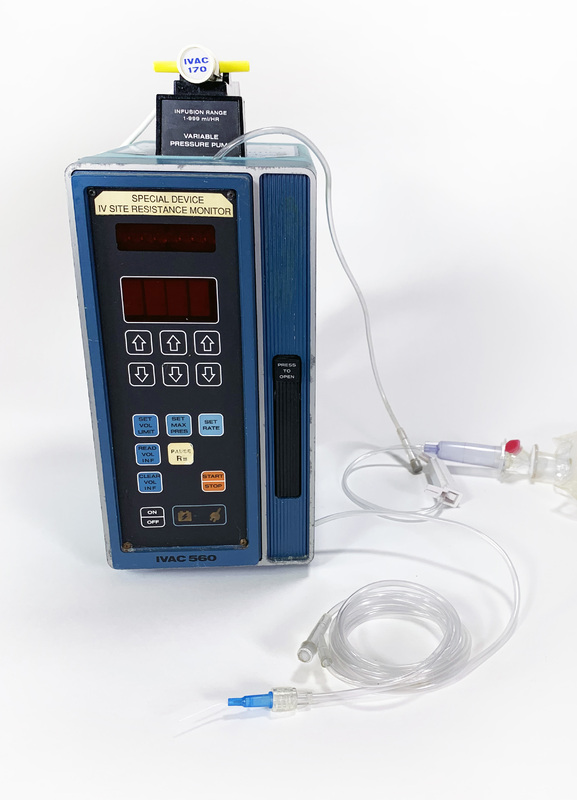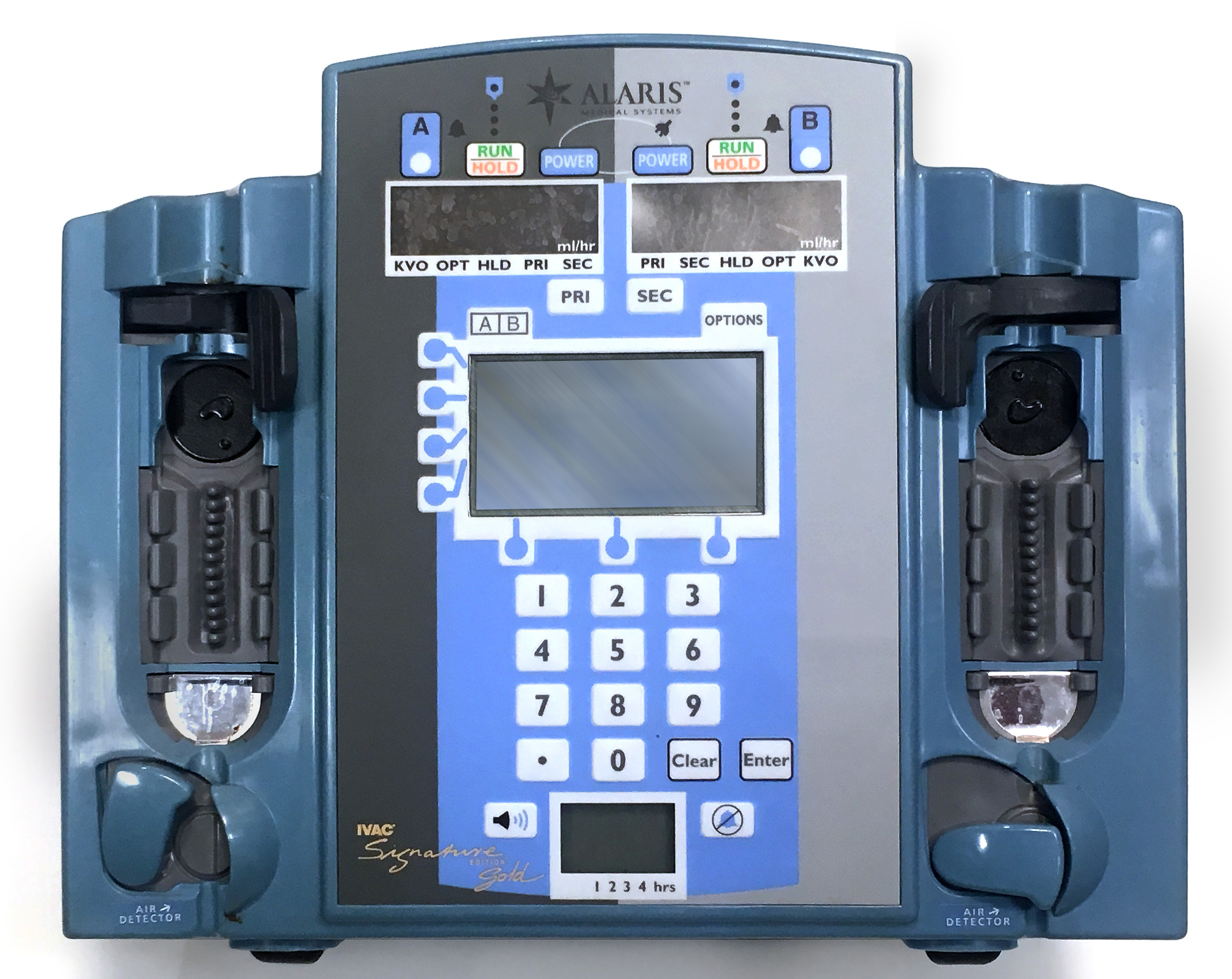Invention
Baxter-Bard InfusOR Syringe Pump, 1986
Brigham and Women’s Hospital anesthesiologist and bioengineer, James Philip, ME, MD, and Daniel Raemer Ph.D., developed the first bolus plus infusion pump for intravenous drug administration with the Baxter-Bard InfusOR Syringe Pump. This device delivered a bolus (sudden large intravenous drug dose to increase blood level of drug immediately) simultaneous with increased infusion rate to maintain a constant level of a drug in the blood. Magnetically attachable coded labels for different drugs enforced safety limits and provided a starting setting to properly tailor the therapy to the patient. This was the first pump to serve controlled drug infusion needs. It remained on the world market for 25 years.
Prototype of Signature™ Pump by IVAC Corporation, 1986
Brigham and Women’s hospital anesthesiologist and bioengineer, James Philip, ME, MD, invented and developed the resistance monitoring infusion pump. Flow into an IV was varied a small amount and the resulting pressure change was measured to determine infusion resistance. The amount of resistance was used to tell (with an alarm) when fluid was infusing into tissues instead of properly into veins, thus avoiding potential injury to the patient. This prototype demonstrated what the commercial IVAC Signature™ Pump (pictured above) would do. It was used throughout the healthcare industry for many years. US Patent 4898576
The Bayh-Dole Act of 1980 permitted inventors working with federal funding the option of conditional ownership of an invention. The success of the Bayh-Doyle Act, which created incentives for unique inventions to reach the public, may have influenced the patent policy of non-government funded, institutionally sponsored inventions like this. The patenting and licensing of this infusion pump marked a turning point in the relationship between the medical device industry and Brigham and Women’s Hospital. A “no-patent, free to everyone” policy was rewritten at BWH to one incorporating a protected, exclusive arrangement with specific manufacturers in order to ensure that hospital-funded inventions might make it into production and help patients.



